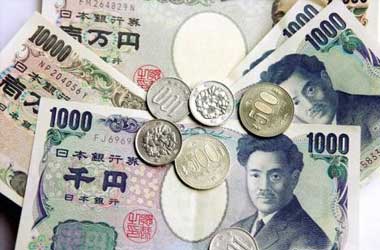 The Japanese yen declined against the greenback yesterday following the report of worse than anticipated flash manufacturing PMI (purchasing managers’ index) data and indicated contraction of the sector.
The Japanese yen declined against the greenback yesterday following the report of worse than anticipated flash manufacturing PMI (purchasing managers’ index) data and indicated contraction of the sector.
Notably, the flash manufacturing PMI data from the US was better than expected and indicated expansion of the sector. That enabled the USD/JPY pair to rally from a low of 104.90 to a high of 105.34 in a day.
According to IHS Markit, Japan’s flash manufacturing PMI inched upwards to 47.30 in September, from 47.20 in the earlier month, and lower than the reading of 48 anticipated by economists.
The reading indicates that business activity was downhill in September, paving way for further sluggishness in the economy in the third-quarter. Other survey indicators underline a tough rebound in forthcoming months, with demand scenario remaining gloomy.
Nevertheless, there seems to be streaks of positive news as well. Labor markets seem to be stabilizing and business optimism is improving, primarily among goods manufacturers, against the backdrop of increasing anticipations that the Covid-19 pandemic will be contained in 2021. Interestingly, optimism in the manufacturing sector reached its highest level in more than two years.
The main au Jibun Bank flash Composite PMI prepared by IHS Markit and based on 85% to 90% of feedback obtained from monthly polls, rose from 45.20 in August to 45.50 in September. The index hinted a further notable drop in private sector output in both services and manufacturing sector, but with the phase of decrease slowing down mildly.
The mean PMI for the three months ending September stood at 45.20, the highest level so far in 2020, and significantly greater than the 31.50 reported in the June quarter. However, demand environment continues to be extremely weak, mirroring gloomy domestic and overseas markets due to Covid-19 induced uncertainty and related restrictions.
As a result, inflows of orders continued to decline in September, driven by a further drop in exports. This paved way for additional operating capacity, with work backlogs running out for the 13th month in a row.
Companies in Japan continue to stare at subdued price pressure against the backdrop of consistent economic decline. Input costs increased slightly in September, after remaining flat in the earlier month, led by an increase in manufacturing costs associated with higher base metal prices and rise in transport fees.
On the contrary, service providers posted further drop in business costs due to a decline in labor costs and trimmed operating hours linked to social distancing initiatives.
The IHS market also reported the US manufacturing PMI data. According to the institution, the flash manufacturing PMI increased to 20-month high of 53.50 in September, from 53.10 in the earlier month and slightly above the figure of 52.50 anticipated by economists.
Flash manufacturing output index rose to 10-month high of 53.30 in September, from 52.70 in the prior month. However, flash services business activity index declined to two month low of 54.60 in September, from 55 in August. Overall, flash composite output index also declined to two month low of 54.40, from 54.60 in August.
US firms recorded further robust increase in business activity this month, although at a slower rate than in August, completing a solid third-quarter. Both manufacturers and service providers posted robust growth in output, with goods manufacturers recording a faster increase in production.
In the meantime, fresh orders rose for the second consecutive month, rising at the quickest rate since February 2019.
Looking ahead, private sector companies have a positive outlook for output over the coming year, but the overall level of optimism has declined to a four-month low.
In case of service sector, new business recorded an increase in growth rate and reached the strongest level in 18 months. Employment rose in a robust manner, although at a milder rate in August. Business anticipations also moderated against the backdrop of forthcoming election and covid-19 related uncertainty.
In case of manufacturing sector, the rebound was backed by a faster rate of production, with a further rise in fresh orders and restart of business operations. Fresh business increased at a solid rate that was widely similar to 19-month high in August.
Fresh export orders slowed down. Similar to service sector, manufacturers were less optimistic about increasing output over the forthcoming year.




